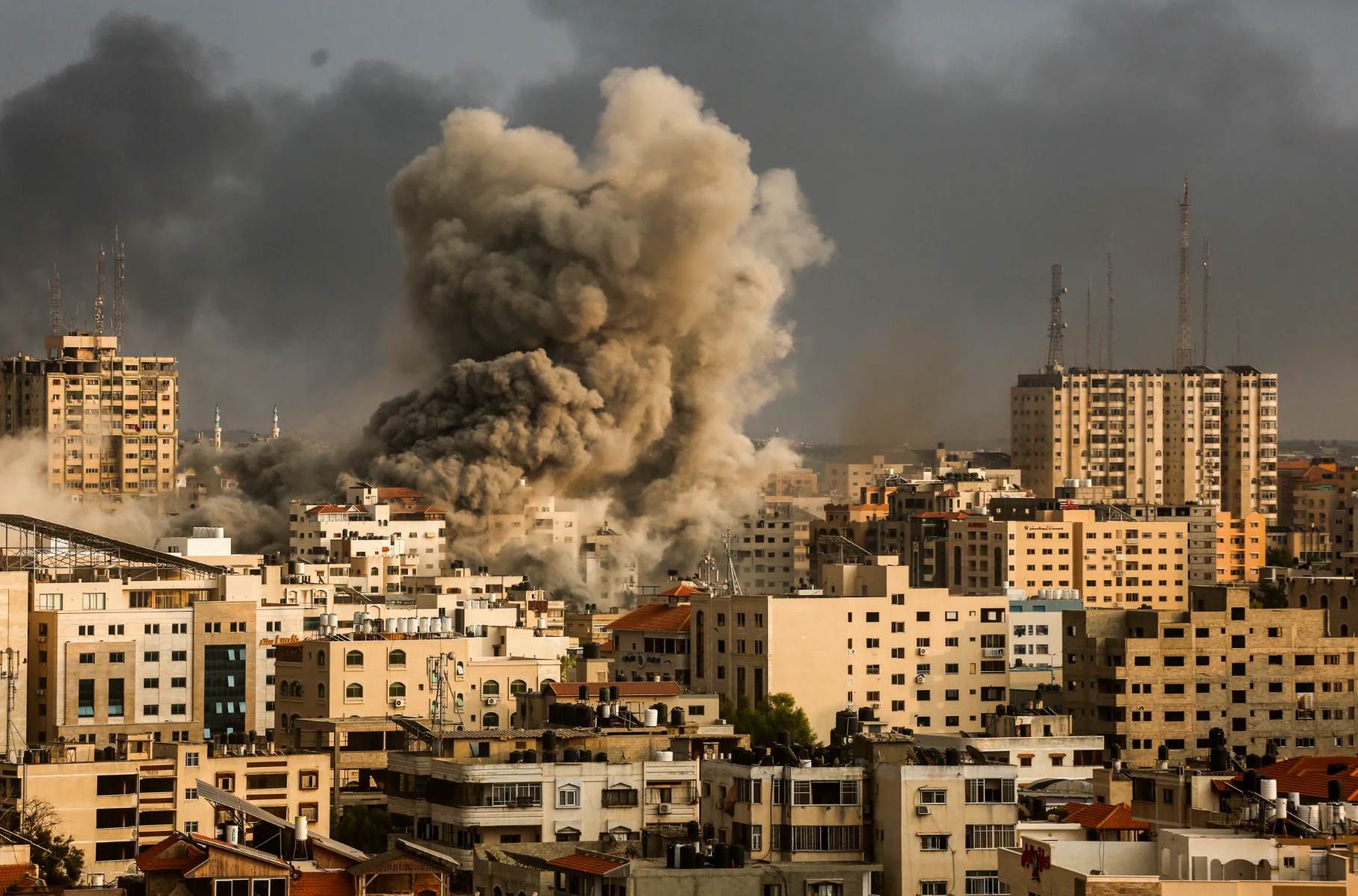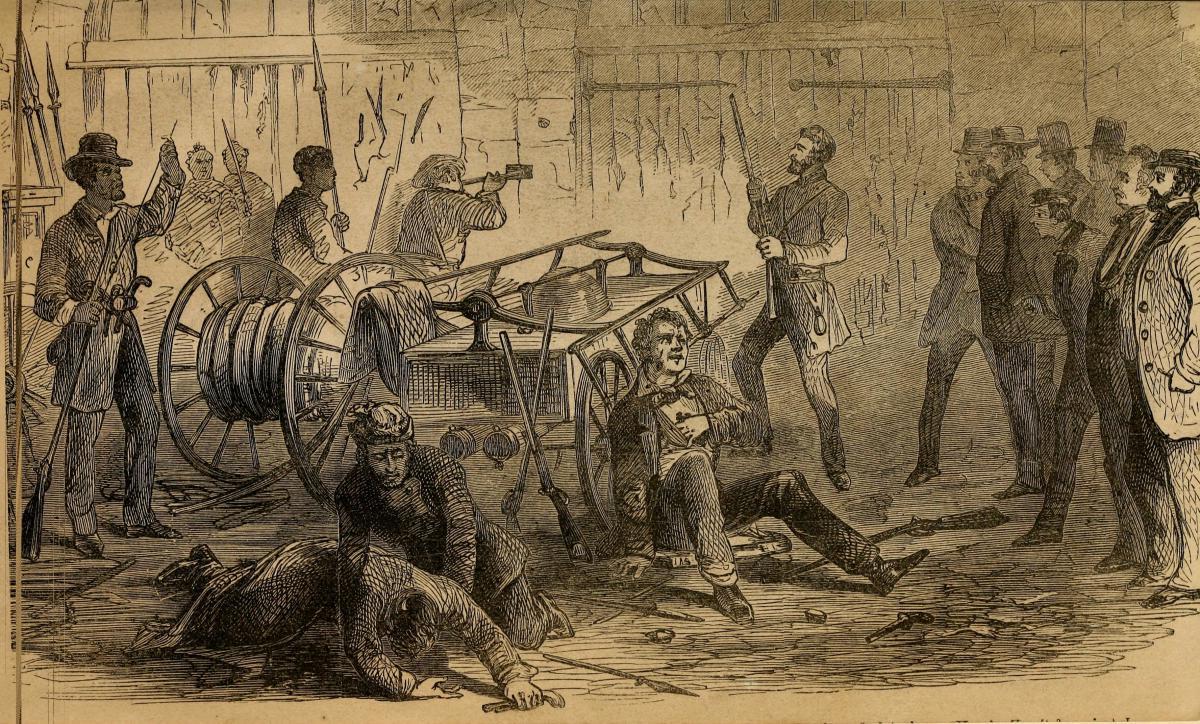
What sparked the Israel-Hamas war on October 7, 2023? The conflict ignited when Hamas launched a coordinated assault on Israel from the Gaza Strip, involving land, sea, and air attacks. This sudden escalation led to over 1,200 deaths, primarily Israeli citizens, marking the deadliest day for Israel since its independence. The attack included a barrage of rockets, militant infiltrations, and breaches of Israel's borders, overwhelming the country's defenses. Israel's response was swift, declaring a state of war and initiating air strikes on Gaza. This conflict has deep historical roots and significant humanitarian implications, affecting millions of lives on both sides.
Key Takeaways:
- The Israel-Hamas war began in 2023, leading to a severe humanitarian crisis and significant loss of life. The conflict has persisted despite numerous ceasefire agreements, causing massive displacement and casualties.
- The international community has been actively involved in addressing the humanitarian crisis and securing the release of hostages. Public opinion on the conflict varies widely, with most Americans experiencing strong emotional reactions but lacking basic knowledge about the war.
The Beginning of the Conflict
The Israel-Hamas war, which erupted on October 7, 2023, has become one of the most significant and devastating conflicts in recent history. Here are some crucial facts to understand the scope and impact of this war.
- The war began on October 7, 2023, when Hamas launched a land, sea, and air assault on Israel from the Gaza Strip.
- The initial attack resulted in more than 1,200 deaths, primarily Israeli citizens, marking the deadliest day for Israel since its independence.
- Over 240 people were taken hostage during the attack, including some Americans.
- Israel declared itself in a state of war for the first time since the Yom Kippur War in 1973.
- The Israel Defense Forces (IDF) responded with air strikes on the Gaza Strip.
- Weeks later, the IDF escalated the conflict by sending ground troops and armored vehicles into Gaza.
Humanitarian Crisis and Blockade
The war has led to a severe humanitarian crisis, with significant loss of life and destruction of infrastructure in Gaza.
- By early 2024, tens of thousands of Gazans had been killed, and over half of the buildings in the Gaza Strip had been destroyed or damaged.
- The takeover by Hamas prompted a blockade of the Gaza Strip by Israel and Egypt, setting the stage for continued unrest.
- The first major conflict between Israel and Hamas, which included Israeli air strikes and a ground invasion, took place at the end of 2008.
- Hostilities have continued to break out in 2012, 2014, and 2021, with the high population density of the Gaza Strip and the proliferation of subterranean tunnels complicating these hostilities.
- Hamas and other Gazans have built an extensive labyrinth of tunnels under the densely populated strip, which are difficult to detect or destroy.
- These conflicts have been devastating for Gaza’s civilians, resulting in a high human cost and significant damage to infrastructure.
Ceasefire Agreements and Defense Strategies
Despite numerous ceasefire agreements, the conflict has persisted, with both sides preparing for continued hostilities.
- Hostilities often result in ceasefire agreements that temporarily ease Israel’s blockade and facilitate the transfer of foreign aid into the Gaza Strip.
- Many officials in Israel’s defense establishment maintained that Hamas had been effectively deterred by years of conflict, but the October 7 attack proved this assumption incorrect.
- The assault began with a barrage of at least 2,200 rockets launched into Israel in just 20 minutes, overwhelming the Iron Dome system.
- At least 1,500 militants from Hamas and the Palestinian Islamic Jihad (PIJ) infiltrated Israel using explosives and bulldozers to breach the border.
- Militants disabled communication networks for several Israeli military posts, allowing them to attack installations and enter civilian neighborhoods undetected.
- Militants also breached the maritime border by motorboat near the coastal town of Zikim, further complicating Israel’s defense.
International Response and Human Rights Concerns
The international community has been actively involved in addressing the humanitarian crisis and securing the release of hostages.
- A March 2024 United Nations report found evidence that some victims of the assault were subjected to sexual violence before they were killed.
- The attack was the deadliest day for Jews since the Holocaust, adding to the trauma experienced by Israeli civilians and foreign nationals.
- International efforts were made to secure the release of hostages and mitigate the humanitarian crisis in Gaza.
- Hamas is committed to the destruction of Israel and is designated as a terrorist group by the UK and many other countries.
- Hamas won the Palestinians' last election, further solidifying its position as a major player in Palestinian politics.
- Gaza is ruled by Hamas and has been under siege for years, with severe restrictions on movement and access to basic necessities like food, water, and medical care.
Displacement and Casualties
The war has caused massive displacement and a staggering number of casualties among Gaza’s civilian population.
- Over 1.7 million of Gaza’s 2.1 million residents have been displaced, with most facing unsanitary, overcrowded conditions and acute shortages of essential supplies and services.
- More than 36,000 Palestinians in Gaza have been killed, according to the Hamas-controlled health ministry.
- At least 252 hostages were taken, including some Americans, with around 112 hostages released in exchange for Palestinian prisoners.
- Israeli forces have been pushing deeper into Gaza, facing significant challenges including defensive lines of mines, booby traps, snipers, and mortar attacks.
- The urban warfare stage of the offensive is expected to be protracted and challenging for Israel, with the presence of Israeli captives likely held in Hamas tunnels further complicating the operation.
- The extensive tunnel network built by Hamas under Gaza City poses a significant challenge to Israeli forces, requiring them to breach defensive lines and navigate through a labyrinthine infrastructure.
Clashes in the West Bank and Israeli Military Operations
The conflict has also sparked violence in the West Bank, further complicating the situation.
- The IDF has been cautious in its approach, pushing forward slowly and cautiously in three entry zones, including the semi-rural area north of Gaza City and adjacent to the Erez crossing.
- Since the Hamas attack in early October, over 175 armed clashes have been reported across the West Bank, with Palestinian militants firing shots at Israeli military checkpoints and positions.
- The deadliest event in the West Bank since October 7 involved clashes between Hamas and Katibat Tulkarm – Quick Response militants in the Nur al-Shams refugee camp, resulting in at least 15 fatalities, including six children and an Israeli soldier.
- Israeli Prime Minister Benjamin Netanyahu has stated that Israel seeks “total victory” over Hamas, including destroying Hamas’s military and governing capabilities in Gaza and recovering all hostages.
U.S. Policy and Iran’s Role
The United States and Iran have played significant roles in the conflict, influencing its dynamics and outcomes.
- The U.S. has designated Hamas as a foreign terrorist organization and has been involved in efforts to secure the release of hostages and mitigate the humanitarian crisis in Gaza.
- Iran provides regular material support to Hamas but has not been found to have orchestrated or had foreknowledge of the October 7 attack.
- U.S. intelligence indicates that about 65% of Hamas’s tunnel network in Gaza remains intact, despite Israeli claims of destroying half of the 30,000 Hamas fighters.
- At least 287 Israeli soldiers have died in battle since Israel’s military began ground operations in Gaza.
Humanitarian Aid and Food Insecurity
The conflict has severely impacted the delivery of humanitarian aid, leading to widespread food insecurity in Gaza.
- Obstacles to transporting aid through crossings and Israeli checkpoints have contributed to high levels of food insecurity in Gaza, exacerbating the humanitarian situation.
- Many residents of Gaza face acute shortages of food, water, medical care, and other essential supplies and services, leading to severe humanitarian conditions.
- Over 1.7 million residents of Gaza have been displaced, with most facing unsanitary, overcrowded conditions and acute shortages of essential supplies and services.
- The Hamas-controlled health ministry in Gaza reports that more than 36,000 Palestinians have been killed in the conflict, highlighting the devastating human toll.
International Action and Public Opinion
The international community has been actively involved in addressing the humanitarian crisis, while public opinion on the conflict varies widely.
- International action has been focused on securing the release of hostages and mitigating the humanitarian crisis in Gaza, with various countries and organizations providing aid and support.
- The BBC provides a detailed explanation of the conflict, including its historical context and the current state of the war, highlighting the complexities and challenges involved.
- Britannica offers a comprehensive summary of the Israel-Hamas war, including its historical context, key events, and humanitarian implications.
- The Congressional Research Service (CRS) has published a report on U.S. policy regarding the Israel-Hamas conflict, providing insights into U.S. involvement and options for Congress.
- Pew Research has conducted surveys on public opinion regarding the Israel-Hamas war, revealing that most Americans experience strong emotional reactions to the conflict, including sadness, anger, exhaustion, and fear.
- An overwhelming majority of U.S. adults (83%) say that hearing or reading news about the Israel-Hamas war makes them feel sad, while about two-thirds (65%) say it makes them feel angry.
- Despite strong emotional reactions, most Americans are not paying close attention to news about the conflict. Only about half of U.S. adults can correctly answer factual questions about the war.
- The historical roots of the conflict are deep and complicated, leading to many Americans having trouble formulating opinions about the war. Basic knowledge about the conflict is often lacking, with only about 80% of respondents correctly identifying Hamas as the group that attacked Israel.
Final Thoughts on the Israel-Hamas War
The Israel-Hamas war, starting on October 7, 2023, has been a devastating conflict with significant human and structural costs. Over 1,200 Israelis lost their lives in the initial attack, and more than 36,000 Palestinians have died since. The humanitarian crisis in Gaza is severe, with over 1.7 million people displaced and acute shortages of essential supplies. The conflict has seen intense military actions, including air strikes, ground invasions, and urban warfare. International efforts focus on securing hostages' release and providing humanitarian aid. The war's complexity, deep historical roots, and ongoing violence make it a challenging situation for all involved. Understanding these facts helps grasp the conflict's magnitude and the urgent need for a resolution.
Frequently Asked Questions
Was this page helpful?
Our commitment to delivering trustworthy and engaging content is at the heart of what we do. Each fact on our site is contributed by real users like you, bringing a wealth of diverse insights and information. To ensure the highest standards of accuracy and reliability, our dedicated editors meticulously review each submission. This process guarantees that the facts we share are not only fascinating but also credible. Trust in our commitment to quality and authenticity as you explore and learn with us.


